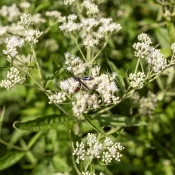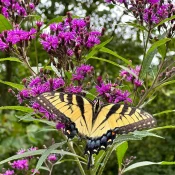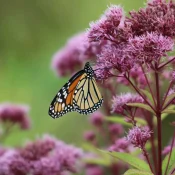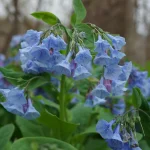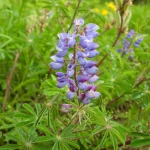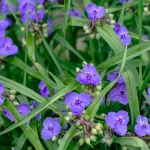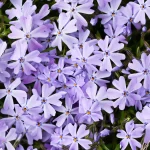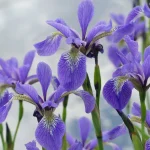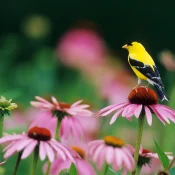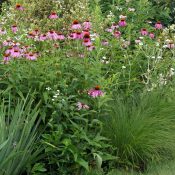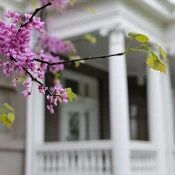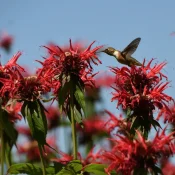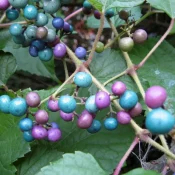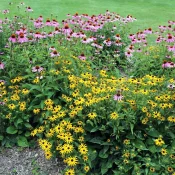Blue Mistflower
At the end of the summer, pollinators need food to help their migration journeys or to help get ready for hibernation. Enter late-blooming native plants, like Blue Mistflower. Blue Mistflower puts out umbrella-like clusters of tiny pom-pom flowers in the late summer/fall. They like sun to part sun and get tall: 3-4 feet. Blue Mistflower can spread quickly and has a reputation for being “aggressive,” but getting it controlled in the spring helps keep it in check. Scroll on for planting tips.
- Full Sun, Part Sun
- Medium (3-5')
- Fall flowers
- Pollinator lifeline
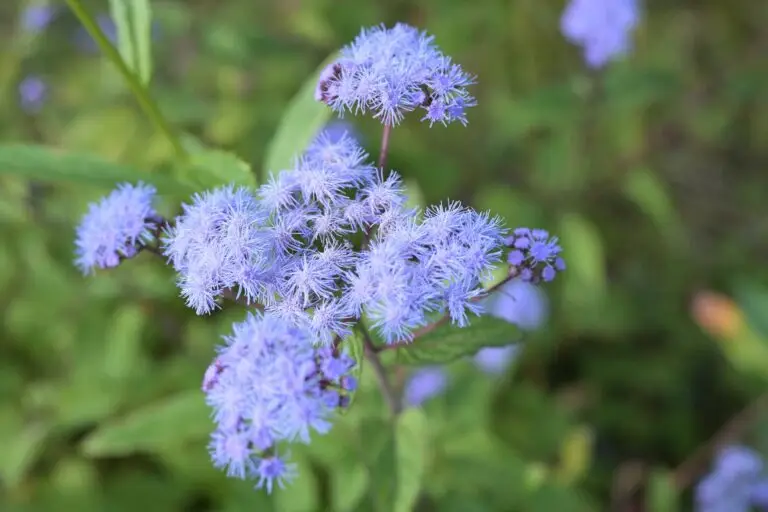
What are the benefits of planting Blue Mistflower?
First, let’s start by celebrating Blue Mistflower as a native plant. Native plants have grown in their home area for thousands of years. Every drought, blizzard, and weather event they have lived through. They don’t require fancy watering systems or special care: native plants literally plant themselves. There are no better plants for your region than native plants.
Planting native plants makes our yards and spaces gorgeous while helping the birds, butterflies, and animals (and helping save us water and time.) Here are three benefits to planting native plants like Blue Mistflower:
- Support wildlife. Without native plants, iconic animals like Monarch butterflies and songbirds won’t have the food or homes needed to survive.
- Save time and money: after the first year of getting established, native plants like Blue Mistflower are happy with rain.
- Enjoy fuss-free beauty. Native plants are gorgeous! Blue Mistflower is a perfect example of how beautiful and resilient native plants are—they are always the best choice for our gardens.

Blue Mistflower is a butterfly favorite at a crucial time
Blue Mistflower blooms at the end of the season, normally in August through September/October. This is a crucial time for butterflies.
During this time, monarch butterflies are migrating back to Mexico and need lots of food to make this incredible journey. Planting native flowers that bloom in the fall is crucial to helping them survive.
Plant Blue Mistflower with other fall-blooming native flowers to ensure your garden is filled with butterflies and they have food in the fall. Plant Blue Mistflower alongside fall bloomers like native asters.

Where is Blue Mistflower native?
Blue Mistflower is native to 50% of the United States, from New York to Texas.
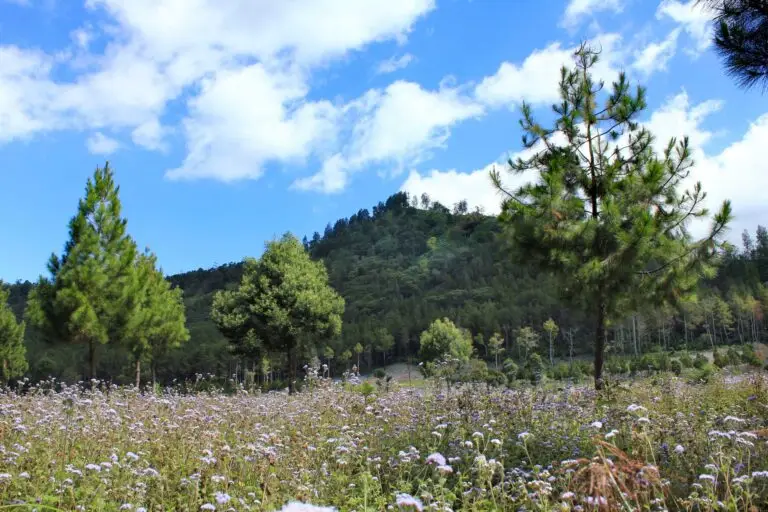
Native flowers similar to Blue Mistflower
There are a few other natives that look and behave similarly to Blue Mistflower, with different coloring and heights:
Uses for Blue Mistflower
Blue Mistflower is short enough to be a great plant for borders, pollinator gardens, and walkways. Plant it with other natives that bloom at different times for interest throughout the year (scroll on for ideas.)
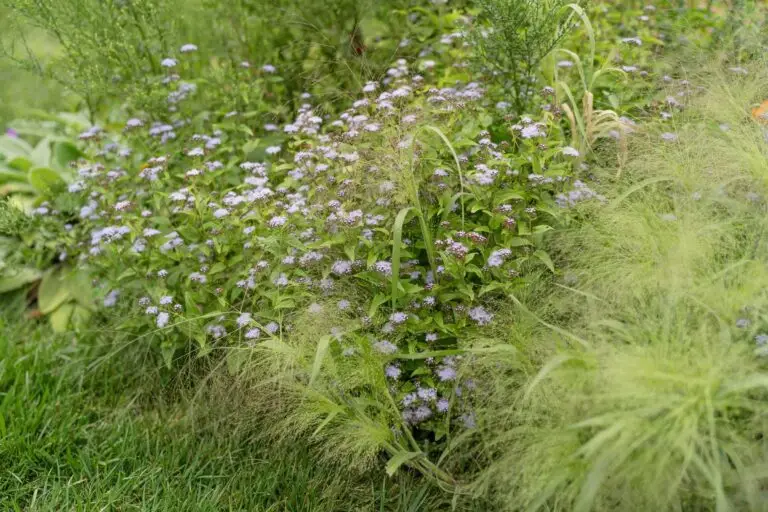
FAQs
Is Blue Mistflower aggressive?
Blue Mistflower spreads quickly—plant it one season and it will come back the next doubled in size. Because it spreads so quickly, many gardeners consider it aggressive—which is a term for plants that expand their footprint rapidly.
Sometimes Blue Mistflower’s fast-spreading ability is an asset
Not all “aggressive” plants are bad—sometimes a fast-spreading ability is a good thing! If you have a large area you want to cover with pollinator-friendly plants, a fast-spreading native flower like Blue Mistflower is worth considering.
Fast-spreading native plants can quickly fill out large expanses—perfect if you have a big area to cover like a field or a large statement garden. Other fast-growing native flowers to consider for larger spaces include asters, Little Bluestem, Nodding Onion, Mountain Mint, Bee Balm, and Hummingbird Mint.
How can I stop Blue Mistflower from spreading?
Digging up Blue Mistflower in the spring will help control its spread. This is especially helpful if you have a smaller space. To keep Blue Mistflower in check:
- Dig up the plant when it emerges in the spring
- Divide it in half (give it away to neighbors or plant in another spot in the garden!)
Other blue native plants
The color blue is a striking one to add to the garden—it’s also a rare color to find in plants. If you’re looking for other blue flowers, plant native asters, Blue-Eyed Grass and False Blue Indigo.
If you’re into picking plants by color…
Choosing plants via color is a fun (and easy!) way to landscape. Our Three-Color Native Garden guide gives inspiration on what else to plant, based on color.
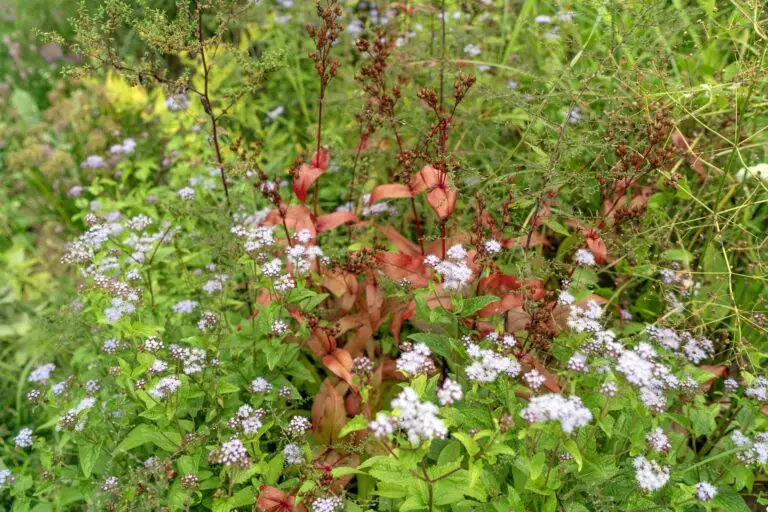
What to pair with Blue Mistflower
Pair Blue Mistflower with native flowers that bloom from spring to fall, so pollinators always have something to eat. Here are some seasonal native pairings:
Native plants for the spring
Native plants for the summer and fall
Blue Mistflower is a late-blooming native flower that is crucial for pollinators at the end of the season. It expands quickly, so give it room to grow or plan on digging some up in the spring to keep it from overtaking the garden. Its flowers offers pollinators a wide expanse to visit, which in return offers you lots of opportunities for butterfly pictures. Looking to plant other butterfly favorites? Head over to our Native Host Plants for Butterflies for more inspiration. Or visit What is a keystone species? to find out about some stellar plant choices. Happy planting!
Sources
- Lady Bird Johnson Wildflower Center, Blue Mistflower
- USDA Plants Database, Blue Mistflower
Blue is a rare color in nature! Here are some other options.

